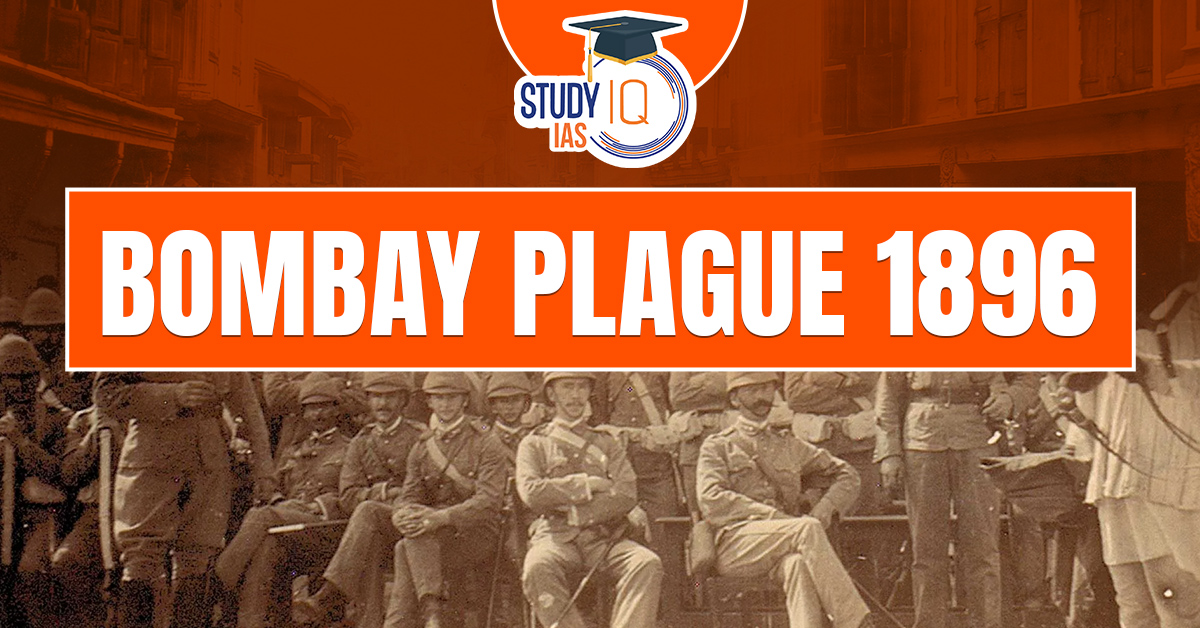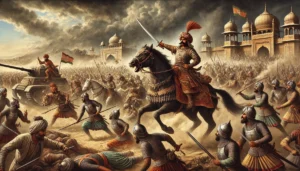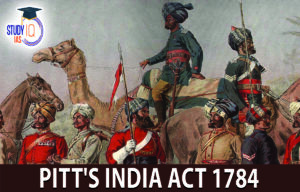Table of Contents
The 1896 Bombay Plague: Background
It was a bubonic plague outbreak that began in the bustling port city of Bombay (now Mumbai) and rapidly spread across colonial India due to trade networks, poor living conditions, and high population density. By 1899, the epidemic had caused hundreds of thousands of deaths and highlighted the critical weaknesses in the existing public health infrastructure under British colonial rule.
British State’s Response
- Formation of the Indian Plague Commission (1898): Led by R. Fraser, this Commission aimed to investigate the cause and transmission of the plague. Despite extensive inquiries and documentation, it failed to conclusively determine the plague’s origin or transmission method.
- Emphasis on Surveillance and Control: Rather than addressing the root public health issues, the colonial authorities framed the plague as a matter of social order. Disease management relied heavily on policing, inspections, and confinements.
- Authorities set up inspection points, quarantine camps, and police cordons, with maps illustrating where people could be monitored rather than identifying affected individuals.
- Observation camps were established near railway stations for scrutinizing travellers.
- Hospitals and municipalities introduced military ward orderlies to enforce health measures, reflecting a belief that coercion could curb the disease.
- Role of Police in Health Surveillance: Police stations became central nodes for data collection, with local watchmen reporting deaths to authorities.
- The approach solidified a top-down, coercive response, sidelining community engagement and public health education.
- Plague Maps as Tools of Power: Maps produced during the epidemic highlighted railways, inspection sites, and cordons, projecting efficiency while obscuring the epidemic’s severity and human suffering.
- These maps reinforced the colonial narrative that discipline and surveillance were necessary to manage the crisis, downplaying the plight of affected communities.
Shortfalls of the Response
- Failure to Address Public Health Infrastructure: The response focused on controlling movement rather than improving sanitation, housing, or medical care. The emphasis on surveillance and policing ignored the need for long-term public health solutions.
- Erosion of Community Trust: Heavy-handed measures like forced quarantines and inspections fostered fear, resentment, and distrust among the local population. There was little effort to engage with communities or educate them about the disease.
- Inefficient and Inhumane Practices: Delays in identifying cases and poor coordination led to further spread of the disease. The response disproportionately impacted poorer and marginalized communities, who faced the brunt of surveillance and control measures.
Key Learnings from the 1896 Bombay Plague
- Surveillance vs. Public Health: Effective public health responses should prioritize healthcare, sanitation, and community engagement over surveillance and coercion.
- Data collection and mapping should aim to identify and mitigate health risks, not merely control populations.
- Community Trust and Cooperation: Building trust through transparent communication and community participation is critical for managing health crises.
- Public health measures must be seen as supportive rather than punitive.
- Ethical Governance: Policies should balance oversight with ethical considerations, ensuring that measures respect individual rights and dignity.
- Avoid framing health crises as primarily issues of law enforcement or social control.
- Equitable Health Policies: Health strategies must address structural inequalities, providing equal access to healthcare and resources for all communities.
- Efforts should focus on improving living conditions, sanitation, and medical infrastructure.
- Modern Relevance: Contemporary health crises, like COVID-19, reveal similar tensions between public health needs and state control.
- Learning from historical missteps can help ensure that modern responses are rooted in empathy, equity, and evidence-based practices.


 Rana Sanga: The Fearless Rajput King and...
Rana Sanga: The Fearless Rajput King and...
 Vikramshila University Revival, Location...
Vikramshila University Revival, Location...
 Pitt's India Act 1784, Background, Provi...
Pitt's India Act 1784, Background, Provi...





















